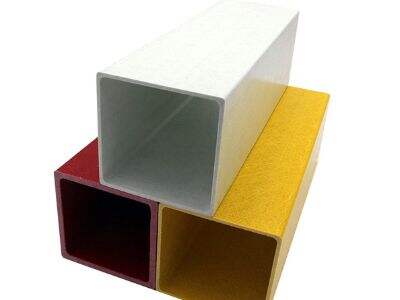Fishing can be really fun! But were you aware that choosing the appropriate thickness and length of your fiberglass rod is very critical? That's right! The thickness and length of fiberglass rod you use also makes a difference in your success at catching fish. Continue reading to discover how to select the best fiberglass rod for your fishing outings!
The Importance of Thickness and Length for Fiberglass Rods
Two important things to consider when thinking about fiberglass rods are the thickness and the length. Now, the thickness of your rod tells you how thick it is. This can alter how much weight it can support and how flexible it is. A fatter rod can be stronger but a thinner rod can let you know when a fish takes the bait.
Rod length also matters, however. A longer rod helps you cast your line farther, especially relevant if you’re fishing in large lakes or rivers. But a shorter rod can give you more control when fishing in tight spots.
What Type of Thickness and Length Should You Use for Your Fishing?
Here are a few things to remember about selecting the appropriate thickness and length for your Fiberglass Rod. Decide which species you will be targeting. The rod for bigger fish may need to be thicker, while smaller fish might do better with a thinner rod.
Next, consider how you enjoy fishing. A longer rod may be a good choice if you want to cast your line far out into the water. But if you’re fishing confined spaces, a shorter rod may be better for you.
How to Choose the Correct Thickness and Length for Your Rod
So, how do you choose the appropriate diameter and length for your fiberglass rod? It’s a matter of striking the balance between strength and flexibility. The thickness needs to be able to support the weight of the fish you plan on catching, while the length depends on your fishing preference.
Consider what type of fishing you will do to determine the right thickness and length. Here are some advantages of the 14-foot Fiberglass Rod for more fishing styles: Say you are fishing for big saltwater fish; you'll likely slew a rod that is not only thicker, but also much longer to compensate for the weight and the fish's strength.
Consider Your Fishing Style, and the Fish You Want to Catch
After deciding about the thickness and the length of your fiberglass rod, keep in mind your fishing techniques and what is your target fish. Some fishing styles require specific rod sizes, to aid you in your fish catching pursuits.
If you prefer fishing in freshwater for smaller types of fish, a thinner and shorter rod might be better. And, if you are looking at catching larger fish saltwater, you may require a thicker rod and a longer rod to cope with the weight and power of the fish.
How to Get Help from Experts for Choosing your Ideal Rod
The best rod for you can make you confused about which fiberglass rod thickness and length to take, if you do not know how to choose it. There’s expertise out there to help you. Provides expert advice from professional fishermen and fishing enthusiasts on Fiberglass Rod choices to suit you.
The right fiberglass rod thickness and length can be determined by consulting with field professionals and considering the way you fish and which fish species you target. Get the proper rod for the kind of fishing you are planning on doing, and get ready to go fishing and catch some fish!
Table of Contents
- The Importance of Thickness and Length for Fiberglass Rods
- What Type of Thickness and Length Should You Use for Your Fishing?
- How to Choose the Correct Thickness and Length for Your Rod
- Consider Your Fishing Style, and the Fish You Want to Catch
- How to Get Help from Experts for Choosing your Ideal Rod

